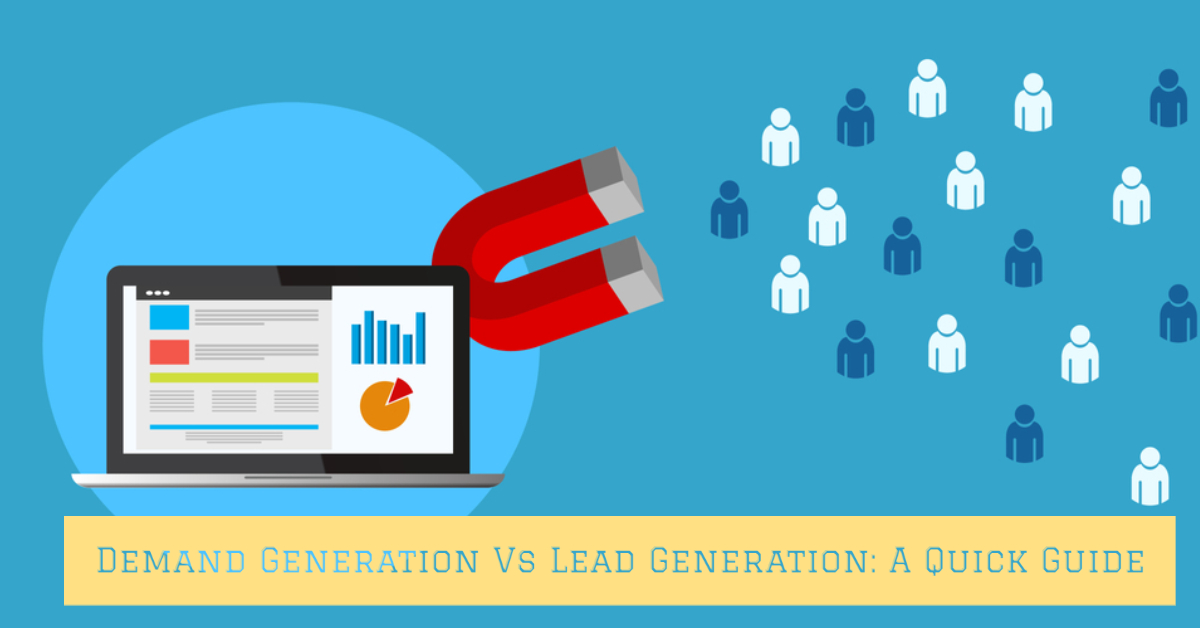Demand Generation Vs Lead Generation: A Quick Guide
If queries like what is demand generation vs lead generation crawls in your mind then remember you are not the only one. Most people are confused about these terms. Well, that’s why we came up with this blog to help you understand the difference between the demand gen. Vs lead gen.
If you are growing a business, you need to understand that both demand and lead generation is important for your business.
What Is Demand Generation?
Demand generation is a marketing activity that helps consumers understand more about the product. Basically, it is the process of building trust and awareness about the product and service in the target market without any goal of converting them into customers. The main focus of demand generation is to create awareness about products in the target demographics.
This marketing strategy certainly can result in increased brand exposure, but the true purpose is to support the target audience, understand and interpret their stress spots and also how your offering can benefit them.
What Is Lead Generation?
On the other hand, the focus of lead generation is to convert visitors into prospects. You can say that lead generation is an aftermath of demand generation. It is the step that comes after the demand generation. The process involves convincing visitors to at least do signup or move down to the sales funnel.
The lead generation practice is to apply when the consumer has moved into the decision-making stage and the main aim of it is to collect as many leads as possible. Let’s say, for example, a customer is reading or learning about any Xyz cosmetic product (demand generation), and then she decides to sign up for a downloadable guide or email newsletter to know all about its benefits and working procedure (lead generation).
The lead generation tactic helps the sales team to approach the customers and know all about their wants and needs with the aim of providing the solution that can help them.
Example of Demand Generation Strategy B2B
Now if you are wondering how to spend in your B2B demand generation practice then below mentioned strategy is worth every second for you.
- The very first tactic is to focus on SEO. Including strong on-page and off-page Seo techniques in your demand generation activities will help you develop your engine ranks, improve traffic flow, and establish authority.
- Further, you do not only establish awareness among customers but also increase the authority of your site by guest posting. A schedule of guest posting throughout social networks can offer you more opportunities to get in front of prospective customers while also displaying your knowledge in their field of interest, which can help you increase your search engine rankings while also gaining credibility.
- Moreover, doing trend articles with knowledge about the subject will also give your business the exposure which you are looking for. They showcase your understanding of the industry as well as your foresight into anticipated future developments.
Example Of Lead Generation Strategy
Now let’s focus on the example of a lead generation strategy that might help your business.
- The very first approach is to make use of ebooks, white papers, and reports. In-depth, digital materials like ebooks, studies, whitepapers, and other leadership theories and instructional content, based on industry, can be quite helpful in displaying knowledge and guiding the reader through the decision stage. This type of gated content usually goes deeper into a concept given in a more demand-driven piece of material.
- The next tactic is to make use of email marketing. Simply writing a letter to express gratitude for the inquiry, a dessert to consume during a demo or webcast, or even a personalized present for a client on the verge of making the purchase decision are all examples of this.
- Further, you can convince clients to join webinars. Webinars may be an excellent means of creating a positive bond during the contemplation and decision phases of the pipeline, and could even continue to nourish clients after they sign on, by using the power of genuine touch.
- Moreover, the approach which is helping many business owners out there is conducting live events. Such events allow salespeople to meet with their customers on an individual basis, respond to their questions thoroughly and personally, and get to understand them socially via meetups or booth conversations.
That’s it! No doubt both demand generation and lead generation are necessary for a business but to implement it wisely, you must know the difference. By understanding the difference you can come up with a strategy that can help you achieve your ultimate goal.
Author


